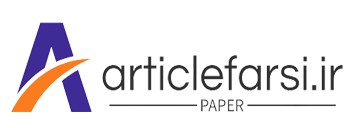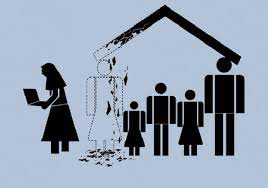مقاله کامل برنامه آموزشی پنهان در آموزش اینترنت-محور زبان انگلیسی
مقاله کامل برنامه آموزشی پنهان در آموزش اینترنت-محور زبان انگلیسی
Hidden Curriculum in Internet-Enhanced English Education: The Representation of Iranian Social Actors in BBC Learning English Program
Khadijeh Karimi Alavijeh* S. Susan Marandi
Received: 2019-06-22 | Revised: 2019-10-30 | Accepted: 2019-12-04
Abstract
Recent years have witnessed drastic enhancements in English language teaching (ELT) especially due to the Internet. Although the literature is well-documented with regard to the positive effects of Internet application in English education, the critical investigation of Internet-mediated ELT sources has rarely been dealt with. In this study, one of the four most favorite Internet-based English programs in Iran and throughout the world (Karimi Alavijeh, 2014), namely, the BBC Leaning English, was investigated in terms of the way it represented Iran. For this purpose, qualitative content analysis was used to extract the main themes of this program and an adapted version of Van Leeuwen’s (2008) Social Actor Network was utilized for the critical discourse analysis of the resulted corpus. The extracted themes, the recognized social actors, and the way different discursive mechanisms and hypertextual techniques had been used to represent them in unfavorable manners unfolded the presence of hidden agenda in a supposedly English learning program.
Keywords:hidden curriculum, adapted version of Van Leeuwen’s Scial Actor Network, Iran, BBC Learning English, Internet-enhanced English language teaching
Introduction
Enthusiasm for the use of the Internet in English education has highly increased in recent years due to its provision of unrivaled potentials and diverse facilities. Some of such facilities include access to constant education, meeting the huge demand for education by reaching a large number of people at any one time, the low cost of Internet-mediated and distance education compared to campus learning, the growing ubiquity of the Web, increasing public familiarity and daily use of the Internet, access to huge information sources, quick information transfer, attractions of multimodal learning, and active collaboration of learners with their peers and teachers (Karimi Alavijeh & Marandi, 2014).
Parallel with the immense advancements of cyber education, critical perspectives with respect to such matters as pornography, intellectual property rights, cyber bullying, privacy, security, digital citizenship rules, libel, digital crimes and language distortion (Berne et al., 2019; Crystal, 2003; Karimi Alavijeh and Abdollahi, 2018; Minjeong & Dongyeon, 2018) are also growing. Such concerns are essential for ELT, particularly because of “the big share that the Internet has in teaching English to a wide population of learners, and in providing a variety of tools and materials both for English teachers and learners, for classroom learning as well as for cyber education and individual learning” (Karimi Alavijeh & Marandi, 2014, p. 125). Nevertheless, critical analyses of the content of Internet-enhanced ELT materials in terms of the ideological values they include and spread have rarely been conducted. Such critical studies are both relevant and imperative since the Internet has a high potentiality for disseminating Westernvalues (Anbarian, 2009; Jordan, 2013; Le’vy, 2001), especially those of English speaking countries, throughout the world (Anderson, 2004; Castells, 2001; Reeder, Macfadyn, Roche & Chase, 2004).
Taking this need into account, and keeping in mind the long history of British global hegemony and the sensitive relations of Iran and Britain, especially during the past 40 years after the Iranian Islamic Revolution (Shoeibi, 2016), we found it quite relevant to explore if there are new relations of power in the pretext of British Broadcasting Channel (BBC), formed through ELT (hidden) curriculum. This was addressed through the investigation of BBC Learning English program, which has proved to be one of the four most popular websites among the Iranian and non-Iranian English teachers (Karimi Alavijeh, 2014).
Special features of digital pages on the web like audiovisual elements, hypertextually interrelated materials, transient as well as permanent contents, and other hyper features have made the analysis of web-based materials complicated. One way to approach this content is breaking it into slices and setting some criteria for the analysis of only particular sections or features so as to achieve manageability, transparency, deep investigation and thick description (Kim & Kuljis, 2010). This was addressed in the present research, on the one hand, through using particular key words for the selection of content, and, on the other hand, through delimiting the study to verbal, rather than audiovisual, content.
For this purpose, the content of this website was analyzed through critical discourse analysis, using the keyword “Iran” and its related lexical items such as “Iranian, Persia” and “Persian” as the criterion both for the selection of the materials among the huge bulk of the website content, and as a benchmark to learn how Iran is represented in this website. To keep the trace of the discursive mechanisms which were in charge of these representations, an adapted version of Van Leeuwen’s (2008) social actor network was
applied to the corpus. This network along with other related issues from the literature will be described in the following section.
Review of Literature
Hidden/Other Curriculum
Suggested by Jackson (1968, p. 5), “hidden curriculum” proposes that education is basically a “social process,” which is addressed through schooling without being part of the formal curriculum.As a behind-the-scene program, the principles and components of a hidden curriculum have their origins in the ruling system to which a particular educational program affiliates itself. As such, the hidden curriculum is a means through which the ruling system exercises its power over people and their thoughts, and it is intentionally hidden to “preserve the hegemony of the powerful over the social strata” (Margolis, 2001, p.
3).
Hidden curriculum was reintroduced by Freire (1973) in the Pedagogy of the Oppressed where he elaborated on multiple facets of suppressive power in education. It was relabelled as the “other curriculum” (Margolis, 2001, p. 3)___rather than formal, overt curriculum___ and as “null curriculum” in that it nullifies “any perspectives that question the capitalist project” (Einser 1985, pp. 97-98). Some “resistance theorists” like Apple (1982) and Giroux (1981) argue that hidden curriculum is both natural and necessary for socializing students (Margolis, 2001, p. 16). They declare, however, that the presence of a hidden curriculum should by no means mean that students are denied of their active role in making personal decisions, and that it is the educators’ responsibility to uncover how the curriculum “reproduces structures of power and oppression” (Margolis, 2001, p. 16). This idea was revived by Freire (1973, 1982, 1994) who believed that students “negotiate, accommodate, reject, and often divert socialization agendas” (p. 16).
The idea of a hidden curriculum was originally concerned with the schooling process (Martin, 1983), but it expanded itself to include concepts such as class, gender, language, and race biases latent in educational materials and policies in higher education (Margolis, 2001). In English language teaching (ELT), there is extensive literature on different aspects of hidden curricula present in the field, especially in authoring, publishing, and disseminating English course books throughout the globe (e.g., Ehrensal, 2001; Kumaravadivelu, 2018; Pennycook, 1994; Phillipson, 1992, 2009; Spring, 2009) and presenting them as unquestionable (Progler, 2011; Spring, 2009). Uncovering the hidden agenda in ELT has revealed how global systems of power disseminate particular ideologies through globalized English education, particularly through English course books produced in core countries and publicized throughout the world (e.g., Heiman, 1994; Pennycook, 2007a, 2007b). Accordingly, ELT critical thinkers draw attention toward the efforts that some Western countries have made throughout history to establish their dominance over the world, be it conquering the lands of non-English-speaking people and taking the control of their educational and cultural centers (Adaskou et al., 1990; Asraf, 1997; Canagarajah, 1999), dominating their culture, history, thinking system, and lifestyle (Karimi Alavijeh & Marandi, 2019; Pennycook & Coutand-Marin, 2005; Phillipson, 1992, 2009) or characterizing and representing them in false, unrealistic manners (Canagarajah, 1999; Karimi Alavijeh & Marandi, 2014) mainly through English materials.
Although the contemporary literature is replete with critical studies which deal with various aspects of hidden agenda in commercial English course books, there is still a paucity of critical research on Internet-enhanced English materials. Some current issues regarding the internationally published course books related to this study include: the favorable representation of the US and British life style in English course books (Gray, 2000; Holme, 2003; Pratt et al., 2018); the key role of English textbooks produced in core countries in spreading their culture (Aliakbari, 2004; Cunningworth, 1995; Kakavand, 2009; Kazemi et al., 2017; Kilickaya, 2004; Rahimi & Yadollahi, 2009; Rezaeifard & Chalak, 2017); failure of commercial English course books to attract learners because of their incongruity with their social values and language needs (Brown, 2001; Canagarajah, 1999; Dendrinos, 2001; Poursadouqi, 2012; Sadeghy, 2008); emphasis on the need for inclusion of learners’ local cultures (Chen et al., 2011; Cortazzi & Jin, 1999; Kasaian & Subbakrishna, 2011) or the inclusion of international cultures (Bashir, 2011; Kiss & Weninger, 2013; McKay, 2003; Naji & Pishghadam, 2012) in English textbooks. The content of Internet-enhanced English educational materials, however, has been subject to few studies in recent years, which will be introduced in the following section.
Internet-Enhanced English Education
As the greatest innovation in information technology, the Internet has offered new opportunities to language learners and teachers that have never been preceded by other technologies. The benefits and uses of the Internet for education are growing with every passing day and its immense potentials are widely discussed in the educational literature. Generally, the Internet can serve three main functions: as “a source of information, a place for collaboration, and a place to learn and publish” (Tafani, 2009, p.94). The “non-linear,” (Levy, 1997) huge information on the Web provide a rich source of authentic, human experience; something even more than a “virtual library” (Lee, 2000).
In addition to these advantages, the Internet can particularly be helpful for English teachers due to such possibilities as the permanent provision of up-todate content___leaving no fear of the teaching materials becoming outdated,offering various authoring packages which allow instructors to create their own exercises and to supplement existing language courses, relieving teachers from the trouble of direct teaching and thus allowing them to closely monitor students’ learning, and bringing an ingredient of fun, innovation and amusement into English teaching environments. As a result, Internet-mediated instruction has received special attention in English education, since, beside the privileges that it offers to other fields, the Internet simply introduces a huge asset of English materials and educational tools that can be handled with relative ease by English learners and teachers___compared to students of other majors___due to their knowledge of the English language.
The literature about the Internet-mediated language teaching is welldocumented and vast with regard to its positive effects on language learning and teaching (Clyde & Delohery, 2004; Ducate & Lomicka, 2008; Fayyazi, 2007; Lee, 2008; Nami & Marandi, 2013; Richardson, 2006, Warschauer, 1996) online testing and assessment (Roever, 2007; Weber & Able, 2003; Wolf, 2001), online communication (Lamy & Hampel, 2007) intercultural communication (Farshadnia, 2010; Kim & Bonk, 2002), interactive competence (Chun, 1994), culture learning (Hofstede, 1991), promoting a social constructivist account of culture (Kim & Bonk, 2002), interlocutors’ interpretation of each other’s behaviors on the Web (Frank et
al., 2004), online intercultural communication models (Belz, 2002; Byram, 1997), fostering EFL learners’ intercultural competence (Liaw, 2006) and many other issues.
Despite its triumphant presence in English educational settings, the Internet has some drawbacks, and adopting an uncritical, utopian view towards this instrument may make its use simply disadvantageous. The critical investigation of education via the Internet is growing, especially on topics like cultural stereotyping on the Web (Anakwe et al., 1999), Anglo-American dominance on the Web (Reeder et al., 2004; Yang, 2010) and the threat of the Web to self-identity (Anbarian, 2009), and to the security of nations (Kilroy, 2008).
In ELT, critical standpoints are growing in recent years. Hegemonies in computer assisted language learning (CALL) and the illusion of democratic Internet in ELT settings were recently highlighted in few studies (Lamy & Pegrum, 2012; Marandi, 2017; Marandi et al., 2015). More specifically, in their analysis of Englishcentral and VoA Special English for Persian learners, Karimi Alavijeh and Marandi (2014, 2019) uncovered aspects of political and cultural agenda of ELT materials on the Web. Although the new critical movement seems promising, more critical inspection of hidden curricula present in Internet-enhanced ELT, as it will be explored in this study, is still an urgent need.
Van Leeuwen’s Social Actor Network
Van Leeuwen (2008, p. 6) defines discourse as the “social cognition, of a socially constructed knowledge of some social practice, developed in specific social contexts, and in ways appropriate to these contexts.” Since discourses are established via social cognitions, they include in them resources for representing social practices and are, therefore, the best sites to study the overt and covert facets of social practices as manifested in language/texts. Hence, it is both logical and possible to “reconstruct discourses from the texts that draw on them” (Van Leeuwen, 2008, p. 6).
Van Leeuwen (2008) highly emphasizes the difference between social practices, as the core of human behaviors, and their representations in language. In doing so, he uses Bernstein’s (1981) concept of “recontextualization,” which was originally introduced in relation to educational practices, and was also adopted and applied by other critical discourse analysts like Fairclough (2003) and Wodak (2001). Bernstein (1986, p. 5) believed that “the upper reaches of the education system” actively produce knowledge and then embed it into a pedagogic content in the “lower reaches” to serve the contextually defined purpose of a “discourse of order” (Van Leeuwen, 2008, p. 7).
Van Leeuwen’s method makes use of recontextualization analysis to highlight the kinds of “transformations that the original practice undergoes when it is represented within, and from the point of view, of another practice” (Walko, 2009, p. 220). This is, in fact, an “analytical backtracking process” (Walko, 2009, p. 220) where participants and the activities they are engaged in are called “social actors” and “social actions”, respectively by Van Leeuwen (2008, p. 23). This makes up systemic networks that elaborate on how social actorsand actionsare represented through the lexicogrammar of a text. His framework and methodology aim to outline a sociological grammar of representation in discourse, in which critical analysis of particular modes of representation is related to their specific grammatical and rhetorical realizations in texts (Van Leeuwen, 1996).
Van Leeuwen (2008) developed his analytical model of social representations inspired, on the one hand, by Foucault’s (1972) concept of discourse as a “semantic construction of reality,” which has a social
and historical function (Van Leeuwen, 2008, p. vii). On the other hand, he drew mainly on Halliday’s (1978) concept of “register” referring to the semantic aspect of language, and his theory of transitivity (1985), but departed from them in his focus on the sociological as opposed to the linguistic-functional aspect of the analysis, in correspondence with the contexts of situation.
Unlike many other researcher attempting to conduct critical discourse analysis, Van Leeuwen does not build on linguistic operations, such as nominalization and passive agent deletion, or on linguistic categories, such as the categories of transitivity, but instead he “draws up a sociosemantic inventory of the ways in which social actors can be represented” (Van Leeuwen, 2008, p. 23). The systemic network he devised for analyzing the ways through which social actors are represented in discourses is an effective device for analyzing a variety of discourse types including ELT ones. In this study, this network is expected to help the researchers explore how Iranian social actors are represented in BBC Learning English program.
Method
Corpus
The corpus of this study was taken from BBCLeaning English which is a program inside BBC online, including a myriad of video/audio-enhanced materials for English reading, writing, speaking and listening skills. It provides free English learning materials which are mostly suitable for learners around intermediate level, and fall into categories of general and business English; grammar, vocabulary and pronunciation;quizzes; for teachers and the like.
To collect the data, the keyword “Iran” and its related lexical items were searched on this website and 69 excerpts including this word were found. An important point about the BBC Learning English program is its hypertextuality (Albu & Etter, 2016; Levy, 1997); it is not an independent section, rather, it is closely linked with other parts of BBC website. Searching BBC for the keyword “Iran,” for instance, results in 22,434 instances displaying all results for this word throughout BBC, including, of course, the Learning English Program, as Figure 1 illustrates. The search for the same keyword in the BBC Learning English program results in the English educational materials along with links to other parts of BBC website such as the News, Sports, and the like, as shown in Figure 2. The comparison of these two figures reveals how the materials in the English learning program overlap with the content of other parts of the website. The arrows in two figures show that the main difference between the two figures is the change in the place of “Learning” and “Editor’s Choice.” In other words, English learners are just one click away from other-than-Englishlearning programs on BBC, which are developed based on its particular perspectives. For manageability and impartiality concerns, however, this study is limited to the analysis of materials derived from the English educational program.
Instrumentation
Van Leeuwen’s Social Actor Network (SAN)
Due to its social perspective, Van Leeuwen’s SAN was assumed to suit the purpose of this study in that it does not start out from linguistic strategies; rather, it is concerned with how social actors can be represented (Van Leeuwen, 2008, p. 23). In SAN, the term “social actor” is used to refer to the “participants” of social practices (p. 23) and a variety of discursive strategies responsible for different
representations of social actors are extensively introduced. SAN initially determines if the social actors involved in a social practice are included (“inclusion”) in or excluded (“exclusion”) form a particular discourse (Van
Leeuwen, 2008, p. 29). In the latter case, two further discursive mechanisms
/
Figure 1. Search results for the keyword “Iran” in BBC website
/
Figure 2. Search results for the keyword “Iran” in BBC Learning English website
can be realized, namely the “suppression” which refers to absolute deletion of social actors along with their practices, and a “less radical” type of exclusion called “backgrounding” which pushes a social actor back from the immediate context but retrieves it elsewhere in a “deemphasized” form (Van Leeuwen, 2008, p. 29).
The included social actors may be represented through 46 main discursive mechanisms to which their subcategories must be added. To analyze the data of the present study, however, only two sets of discursive mechanisms were used for two reasons: 1. They were recognized to be used most frequently in our data; 2. They had the most descriptive and explanatory power regarding the research data. These mechanisms were dichotomies of association versus dissociation, and activation versus passivation which are defined and exemplified through BBC Learning English samples in the following discussions.
Association versus Dissociation
According to Van Leeuwen (2008), association has to do with linking social actors together to form a society or group without being labeled as such. The following excerpt from BBC Learning English is illustrative:
In recent months the country has faced a number of major challenges from outside its borders…. First, there was the American-led attack on neighboring Afghanistan, and the subsequent stationing of western forces there in Iran’s backyard. Then, Tehran was bracketed, along with its old enemy Iraq, and North Korea….
In this example, Iran, Afghanistan, Iraq, and North Korea make up an unlabeled group, with the alliance formed only in relation to a particular context without remaining true in all situations. This is an instance of what Van Leeuwen (2008) calls association, where a number of social actors are represented as interacting in relation to specific activities without forming an “established, institutionalized” group (p. 39).
Probing deeply into the data, it was found that association was realized not only in relation to social actors, but also in relation to some attributes and actions as well.This led the researchers to apply an adapted version of Van Leeuwen’s model proposed by Karimi Alavijeh (2014). As a result, the former meaning of association offered by Van Leeuwen, henceforth called type I association, along with the latter meaning of association, henceforth called type II association, which takes attributes and actions into account, were used in parallel. This would enhance the descriptive and explanatory power of the instrument. Another example from BBC Learning English can clarify the point:
Ordinary people complain that rents have doubled…. Recently, a number of Iranian administrations have toyed with the idea of raising the price of subsidised petrol, or rationing supply…
In the above excerpt, it is observed that there is no association between “ordinary people” or “administrations” and any other social actor(s). However, associations can be recognized between the Iranian people and the action of complaining against high rents as well as between Iranian administrators and the “toying with the idea of raising the price of subsidised petrol,” which are both instances of type II association with actions.
In addition to actions, devising a new category with attributes as the central point of association has two reasons: First, attributes are by nature different from actions, behaviors, utterances and mental effects (Halliday & Matthiessen, 2004). Second, there are many attributes in our data, linked systematically to particular social actors, which make them a rich source for data analysis. Attributes address one of the following functions: 1. They “characterize” a social actor via linking him/her to a quality such as being clever, deceitful, etc. 2. They “identify” a social actor through identity-related features like people’s job, nationality, religious sect, and the like (Halliday & Matthiessen, 2004, p. 215). These two functions are generally analyzed under the social actor’s attributes in the present study. Social actors can be associated explicitly or explicitly as summarized in Table 1.
Table 1.
Social Actor’s Association Types
Similarly, the definition of dissociation needed some modifications due to the nature of our data. Van Leeuwen (2008) defines dissociation as the “unformation of groups” formed throughout a discourse. In
other words, dissociation is the outcome of the break-down of a former association. In our data, however, dissociation did not rely on association as its precondition; social actors could be represented in dissociation from one another regardless of the presence or absence of any former association. Drawing this demarcation line was more significant when the data was not contextualized enough to keep the trace of former associations, like in brief excerpts. For this reason, type II dissociation (Karimi Alavijeh, 2014), as opposed to type I dissociation introduced by Van Leeuwen, was included. Moreover, there were many instances of dissociation where social actors were denied of any contribution to particular actions and attributes. For such instances, type III dissociation (Karimi Alavijeh, 2014) was used. The following examples can illuminate the point:
As with almost any topic, differences are apparent, given the intense state of factional rivalry between reformists and hardliners.
Here, the two Iranian political factions, are plainly dissociated for their “intense state of factional rivalry” which is an instance of type II dissociation.
The United States is opposed to the project [of exporting Iran’s gas to India] because of the financial and strategic benefits it would give to Iran…
Example 4 includes type III dissociation where the US is explicitly dissociated from the financial and strategic benefits obtained by Iran. Table 2 offers a summary of dissociation types:
Table 2.
Social Actor’s Dissociation Types
In the course of the present study, although association and dissociation types were able to explain the relations among social actors and their actions/attributes, they failed to locate the active or passive position of social actors toward one another, or toward the actions and attributes. This need was met through the application of another pair of discursive strategies, namely activation and passivation in Van Leeuwen’s model, as will be elaborated in the following discussion.
Activation versus Passivation
Activation is the strategy of representing a social actor as a “dynamic force” of a social practice while passivation places a social actor at the “receiving end” of it (Van Leeuwen, 2008, p. 33). In this study, activation and passivation could explain the research data in several cases when it was impossible to explain them via other discursive mechanisms. For example, in such cases as the increase of drug prices, drastic decrease of the value of the Iranian currency, low public sector pay, and the like, it was evident that there exists some relation between the Iranian people and/or government and these issues, but associationdissociation strategies failed to explain them since they were neither actions performed by the Iranian people/government nor their attributes/actions. Here, passivation strategy could explain how Iranian people/government were represented as target to those inconveniences (passivated), with the government almost always represented as being responsible for those hardships. The following example is illustrative:
5. Dollar reserves are running out and even though some sanctions were eased in October to allow in some drugs, the currency crisis has made it near impossible for Iran to buy them.
Here, the Iranian people/government are passivated for being the target of sanctions, and the UN and US are activated for imposing the sanctions. Similar to association and dissociation, activation and
passivation could be applied not only to social actors but also with regard to attributes and actions. Accordingly, activation and passivation of social actors were referred to as typeI, while typeII was used when attributes and actions were involved (Karimi Alavijeh, 2014).
Table 3.
Social Actor’s Activation and Passivation
Procedures
To collect the data from BBC, the keyword “Iran” and its related lexical items such as “Iranian, Persia” and “Persian” were searched on this website. Interestingly, 22,434 results were found consisting of texts and videos including these keywords, with the News entry triggering the largest number, i.e., 19,912 results. Since we were concerned with the English educational program of this website, we saved only the data which appeared in English Learning section which were 69 units including the word “Iran” in audio, video or text type. The transcripts of the video/audio files were also available except for a few cases which were transcribed by the researchers. Moreover, the close examination of the data revealed that the word Iran was used in this program to refer to two groups of Iranian social actors, namely, the Iranian people and the Iranian government/officials. Due to this finding, all discursive mechanisms pertinent to Iran were informed by these three groups of social actors throughout the analyses which are as follow.
Content Analysis
In a process of qualitative content analysis, the obtained data were tentatively coded during an initial “open coding” process (Corbin & Strauss, 1990, p. 12). The resulted codes were reexamined for the most outstanding codes in a process of focused coding which resulted in recognizing the main categories. This was followed by “axial coding” (Corbin & Strauss, 1990, p. 13) which compared and revised the categories and subcategories. Eventually, the main themes were extracted out of the unified categories. The themes were put in the context of lessons again to check if they actually made sense and finally the main themes were determined to be:
Economic hardship in Iran
Restrictions imposed on the Iranian people by their government
Iranian people’s oppositions against their Islamic government
Conflict between two political factions in Iran
Iran’s security and foreign relations Pursuing education in the UK
To ensure the consistency of themetization and categorization (Saldana, 2009), the researchers analyzed the corpus a second time after a two-month interval. This yielded 89.2% of interpretive convergence. In addition, 20% of the whole data was analyzed by another rater who was an expert in content analysis. This resulted in 80% of interpretive convergence.
Critical Discourse Analysis
The adapted version of Van Leeuwen’s Social Actor Network (2008) was used to explain the associations and dissociations, as well as the activation and passivation strategies present in the data. All excerpts including the word “Iran” and its related lexical items were critically analyzed and remarkable results were obtained. To save space, however, a few samples within the recognized themes are discussed in terms of the aforementioned discursive mechanisms.
فایل : 25 صفحه
فرمت : Word
- کاربر گرامی، در این وب سایت تا حد امکان سعی کرده ایم تمام مقالات را با نام پدیدآورندگان آن منتشر کنیم، لذا خواهشمندیم در صورتی که به هر دلیلی تمایلی به انتشار مقاله خود در ارتیکل فارسی را ندارید با ما در تماس باشید تا در اسرع وقت نسبت به پیگیری موضوع اقدام کنیم.








 454875 کاربر
454875 کاربر  85472455
85472455  4512145
مطلب
4512145
مطلب  3564215 دیدگاه
3564215 دیدگاه 